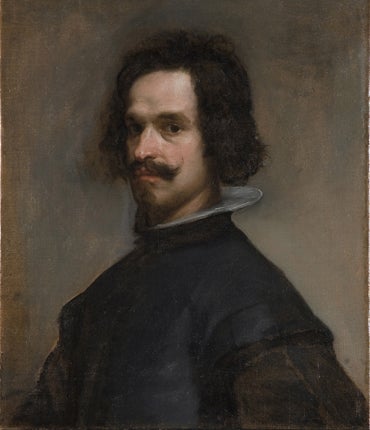Clean-up reveals 'workshop' painting as genuine Velazquez

After radical restoration, a painting owned by New York's Metropolitan Museum that for years was considered a product of the workshop of Velazquez, has been revealed to be the work of the Spanish master himself, and may even be a self-portrait.
The painstaking removal of layers of accumulated overpainting and murky varnish revealed Velazquez's signature brushstrokes on the Portrait of a Man, a three-quarter profile of a man in his thirties, sporting a jaunty moustache.
The portrait bears a strong similarity to a face at the right-hand edge of Velazquez's epic canvas The Surrender at Breda, or The Lances, a masterwork held by the Prado Museum in Madrid. That portrayal of a watchful young man, wearing a hat tilted at a rakish angle is traditionally considered to be a self-portrait of Velazquez, Spain's court painter who was about 35 when he painted both works between 1634 and 1635.
"It's bugged me for 25 years," said Keith Christiansen, the Metropolitan Museum's recently appointed chairman of European paintings. "The quality has always been there. And I had a hard time believing that a work of quality was the product of a generic workshop."
So Mr Christiansen showed the freshly cleaned painting to Jonathan Brown, an internationally renowned expert on Velazquez, who did not hesitate. "One glance was all it took," Mr Brown told The New York Times. "The picture had been under my nose all my life. It's a fantastic discovery. It suddenly emerges, Cinderella-like."
It is rare for a painting's attribution to be "traded up". More usually, a work thought to be by a famous master is later reckoned to be by a lesser artist.
When the Metropolitan acquired the portrait in 1949 as part of a bequest, it was catalogued as a Velazquez but later downgraded. The canvas was so dark, "it was like looking at the bottom of a murky pond", said Michael Gallagher, a senior conservator at the museum, who performed the clean-up.
The layers of synthetic varnish with which the original had been over-painted had deteriorated badly. But after the grime was cleared away, there emerged a characteristic vibrancy in the features, a delicately painted white collar, haunting eyes and bushy eyebrows.
The portrait is an informal, thinly painted and unfinished study, which had prompted dealers to try to "tidy it up", to make it look more Old Master-ish and more commercial, Mr Gallagher added.
Join our commenting forum
Join thought-provoking conversations, follow other Independent readers and see their replies
Comments
Bookmark popover
Removed from bookmarks